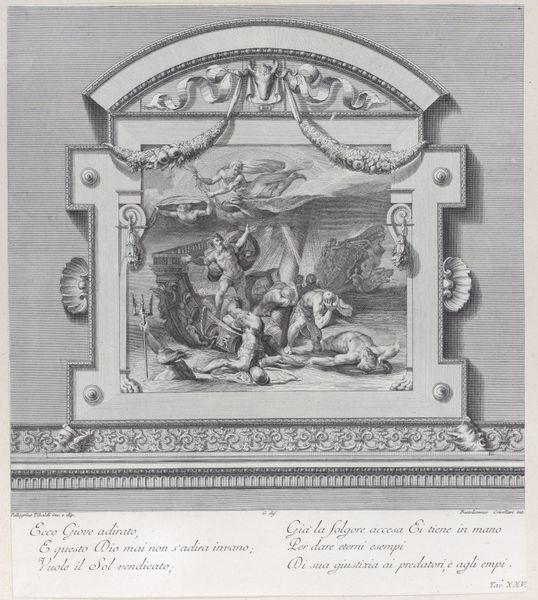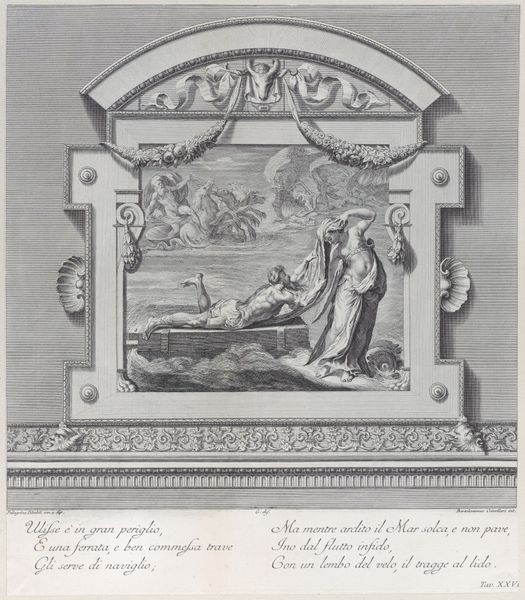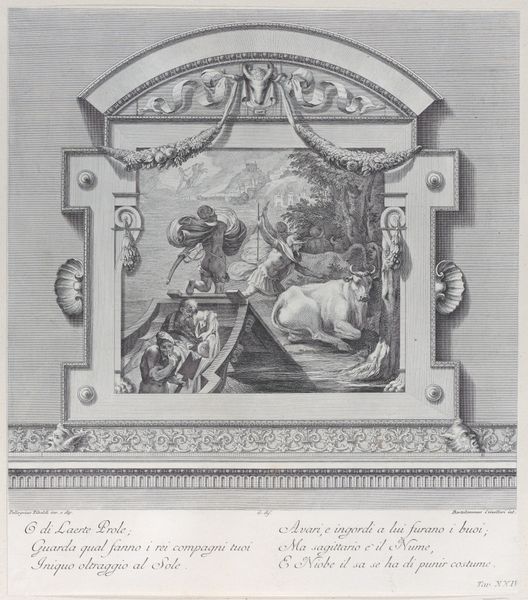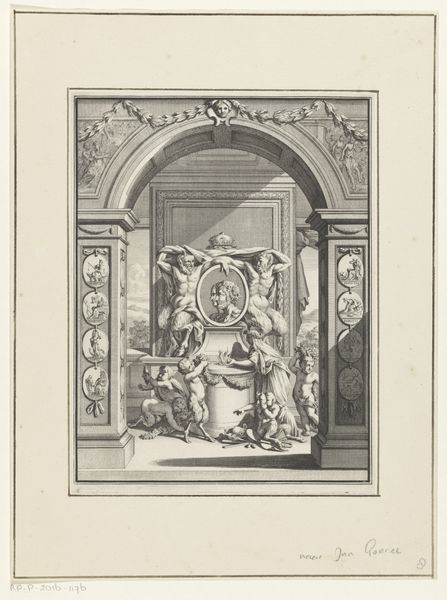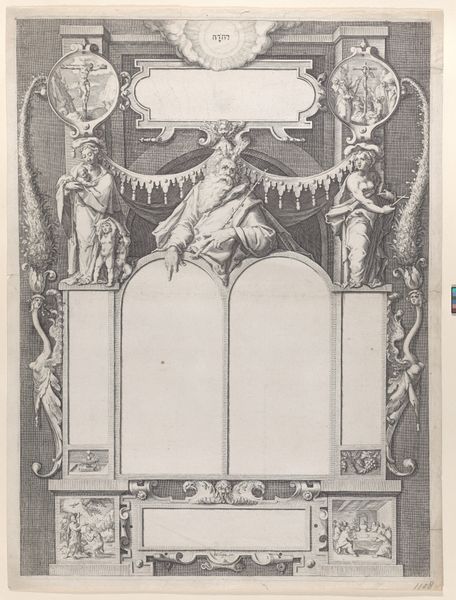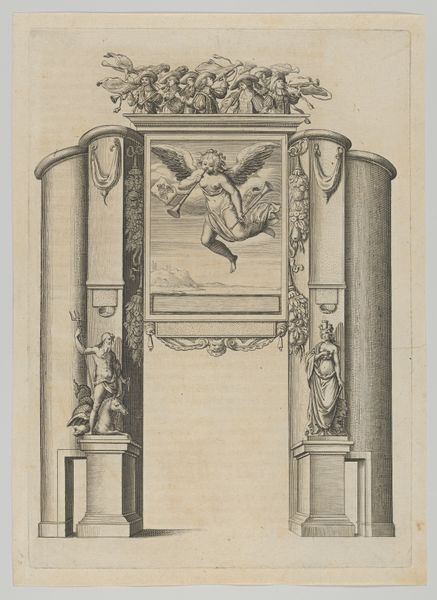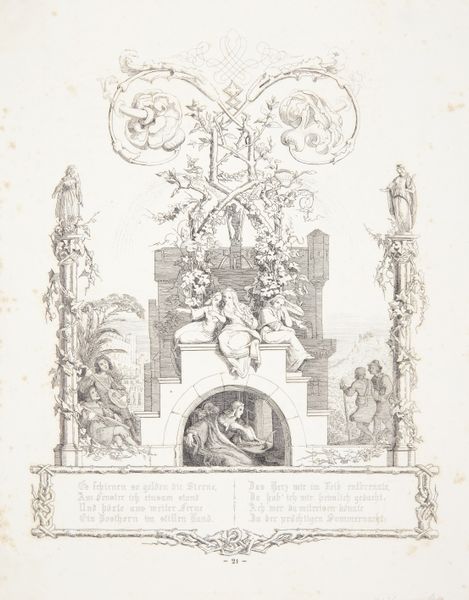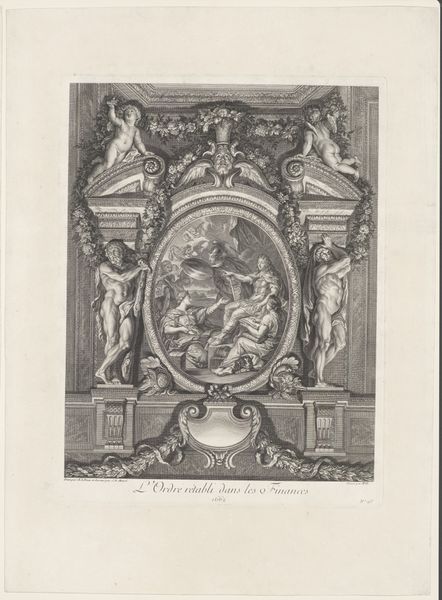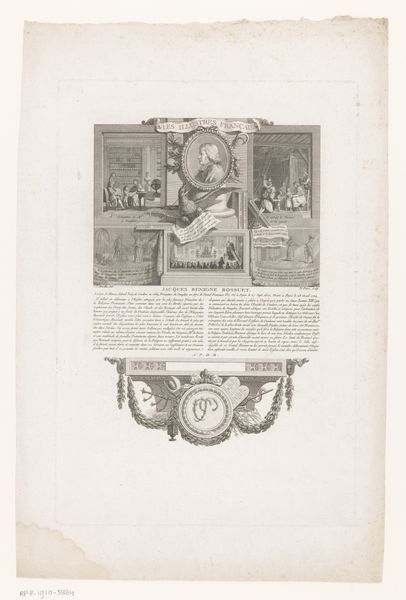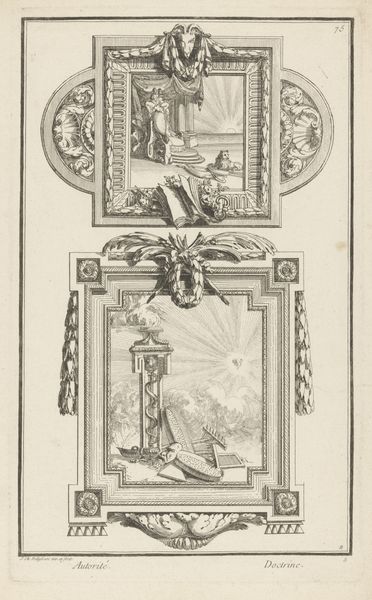
Plate 27: Ulysses received by Alcinous king of Phoeacia and his Queen Areta after his shipwreck 1756
0:00
0:00
drawing, print, engraving
#
drawing
#
baroque
# print
#
figuration
#
line
#
history-painting
#
academic-art
#
engraving
Dimensions: Sheet (Trimmed): 13 7/8 in. × 12 in. (35.2 × 30.5 cm)
Copyright: Public Domain
Editor: So, this is Bartolomeo Crivellari's "Plate 27: Ulysses received by Alcinous king of Phoeacia and his Queen Areta after his shipwreck," an engraving from 1756. There's a very staged feel to it, almost like a theater production. What historical narratives do you think this piece is trying to tell? Curator: Indeed. Consider how this engraving functions within 18th-century European thought. It is a retelling of Homer's *Odyssey*, placing it in a tradition deeply intertwined with power structures. How does Crivellari depict Ulysses, a shipwrecked traveler, kneeling before royalty? Is this simply illustrative, or does it reflect and reinforce the hierarchical structures of the time? Editor: I see your point. It’s more than just depicting a scene; it's about the relationship between the individual and authority. Curator: Precisely. And what about the composition itself? The rigid lines, the deliberate placement of figures—they all contribute to a sense of order and control, reflecting the values of academic art and baroque styles of the period. It invites us to consider the artist's own social positioning and what ideologies are being reproduced here. Who gets to tell this story, and whose voices are marginalized? Editor: I didn’t consider the artist’s own social context so directly before. That adds another layer of interpretation. How much does knowing the story of The Odyssey influence our reading of this image? Curator: Immensely! It predetermines, to some degree, how we understand concepts such as "hero," "home," and "hospitality" when thinking about our world. How might this narrative uphold specific gender roles or normalize certain cultural exchanges of its day? Does Ulysses really look thankful to you, or somewhat forced into his pose? Editor: It almost feels like he’s forced to perform gratitude. I guess art isn't just about the visual; it's about unpacking all these social dynamics, too. Thanks! Curator: Absolutely! It’s about interrogating the visual, and what the dominant narrative privileges—or silences. It is our duty to remember history.
Comments
No comments
Be the first to comment and join the conversation on the ultimate creative platform.
